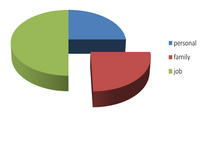The Inner view of CEO’s
Book Review Details:
- Title: CEO of Me, creating a life that works in the flexible job age
- Author – Ellen Ernst Kossek and Brenda A .Lautsch
- Publisher – Dorling Kindersley (India) Pvt. Ltd, publishing as Pearson Power
- Year – 2008
Book reviewed by:
Prof R.Subramanian
Faculty Member
IBS Chennai
Email: rssmanian27@gmail.com
Ellen Ernst Kossek, professor at Michigan State University’s School of Labor and Industrial Relations is a leading expert on research on improving relationships between work, family and personal life in organizations. She has contributed a number of articles related to variety of issues that crop up in many organizations. She has taught managers in North America, Europe, and Asia. She was also elected as one of the Board Of Governors of the National Academy Of Management.
Brenda A. Lautsch, associate professor at Simon Fraser University in Canada. Her research examines the equity and work life implications including flexible work norms. Her work appears in all the leading journals in the country.
“This book has been written with a motto to make the whole working class across the globe to balance their personal and work life.”
First and foremost they request the readers to understand their current managing relationships between work and personal life. They make a statement saying “you are the CEO of your life” and hence you have the control to balance your work and personal life.
This is the simple mantra that he is trying to convey, through various stages discussed under different titles.
CEO OF YOUR WORKING LIFE?
The authors speak about the “Four Rules” that enlightens a person to think that he is the “CEO OF HIS WORKING LIFE”. He says, manage your personal life like a CEO, by making strategic decisions – this creates more work life choices. At the second stage you will have a greater ability to accept more variation and diversity in employment deals. Adherence is the next key aspect he is discussing about-your degree of compatibility is tested here. How well you get along with your organization and its environment.83% OF FAMILIES WITH PARENTS AND KIDS –HAVE DUAL EARNING MEMBERS .50% OF THE WORK PEOPLE MORE THAN 50 YEARS OF AGE CHOOSE NOT TO REITRE OR ATLEAST THEY WOULD TAKE UP A PART TIME JOB.NEARLY 40% OF THE TOP MANAGERS IN THE U.S COMPANIES ARE WOMEN.
They encourage everybody to adopt a suitable flex style to manage actions, emotions and thoughts to create a pattern combining work and personal life. Thus these are the “Four Rules” they talk about, which is really a prerequisite for a person to become a “CEO OF YOUR WORKING LIFE”
At the end of the chapter they give a very interesting exercise; they ask everybody to analyze their current work / life mixture.
The following chart gives the reader the clear demarcation between personal, family and job and the impact of style in each and every individual life.

The author describes in a caption that KNOWING YOUR FLEXSTYLE and he explains in his own inevitable style. If you experience an ongoing tension between your job and personal life without knowing what the root causes are, then you must probably have not understood the underlying fact that “you have developed a work style”. They say people can succeed in their career only if they realize and understand their flex styles and know about how they work in the organization. The reason behind this is “you perceive a fit between your values and your flex styles”. But the real fact is that they have neutral influence on each other. This in turn leads to excess stress and imbalance of work and personal life. They further add on that integrators have difficulty in drawing lines between work and family, Separator, segment work from personal life psychologically and physically.
The authors also talk about the Quality timers, those who use some time cues to decide when to integrate and separate work from personal life. They are supposed to have some “situational smartness” or “situational behavior”.
One must take off the blinders that keep us from seeing that there are more options and ways of living and managing our work style. The book gives a clear picture about flex styles and the way individuals will align their values with the style they demonstrate in the work place.
The book deals with how integrators weigh the tradeoffs of their style. This is best described with the help of the interviews with various people there by defining the associated strategies. The main emphasis is to strike a balance between them and start your journey of change if you do not benefit from your flex style. The book further talks about the changes one can make to gain control and be the CEO of yourself. A cycle of change for transforming flex style, like self monitoring, i.e., reflect on recent situations where one may have daily work life conflicts .Developing a commitment to change, Envisioning alternatives, Creating the right context for change, Experimenting and Exploring new flex styles, are the key suggestive measures explained beautifully in this book.
The book clearly states certain principles like Know thyself, Do your home work, Know “the other person’s interests” and find allies, all these are needed to be adopted by everyone who foresee success and want to embrace success.
Article Reviewed by:
Mr. Wayne Turk
Editor ( The CEO Insights Team)

